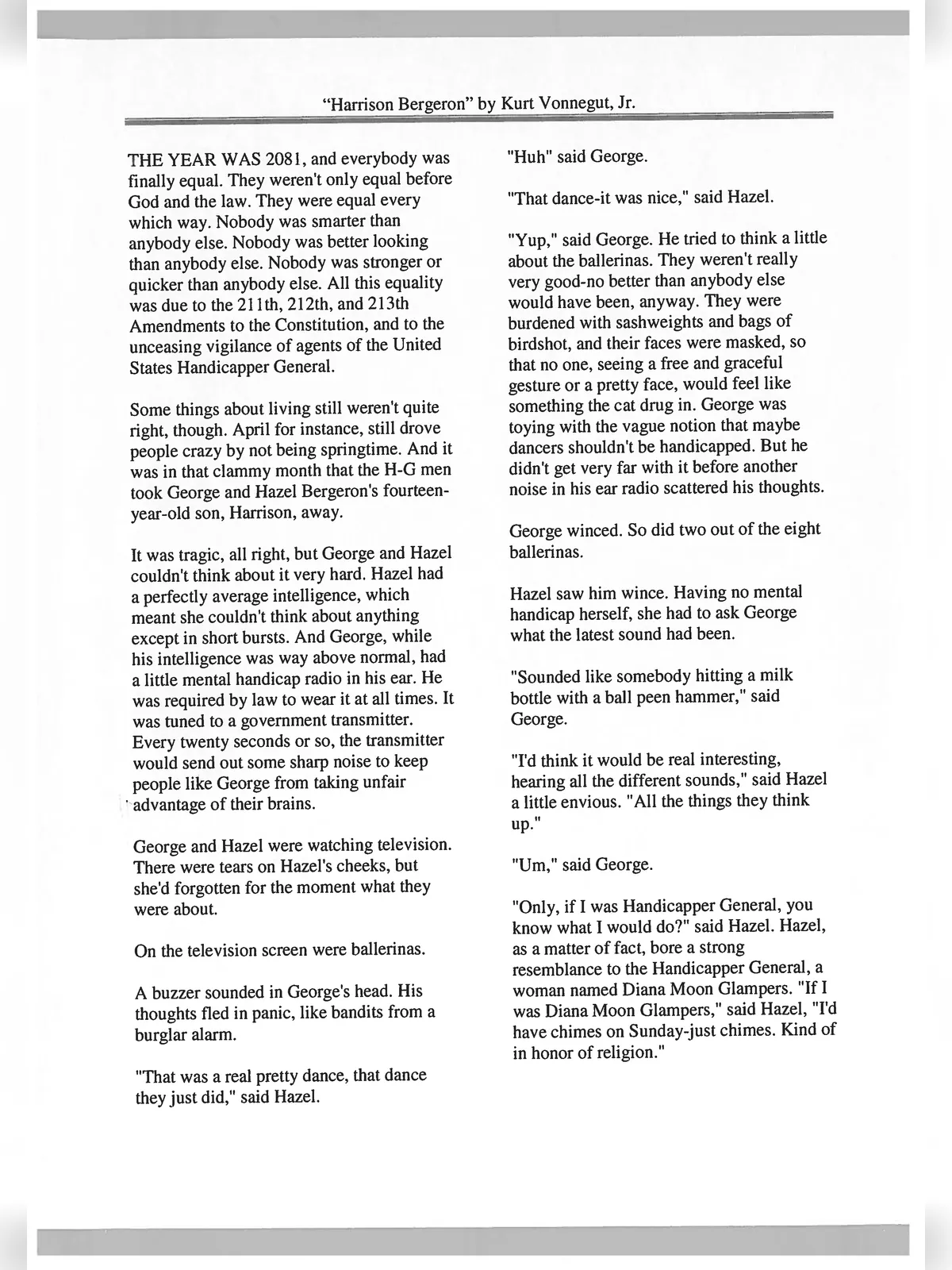Harrison Bergeron - Summary
Harrison Bergeron is a popular dystopian short story by Kurt Vonnegut, first published in 1961. This gripping tale is set in a future society where everyone is made equal through the use of physical and mental handicaps. The story is a classic of dystopian literature, exploring significant themes of individuality, freedom, and equality.
About Harrison Bergeron
In the world of Harrison Bergeron, everyone must wear handicaps to ensure that no one is superior to anyone else. The main character, Harrison, is an exceptionally smart and athletic young man, but he is forced to wear handicaps that limit his abilities. He becomes unhappy with this enforced equality and decides to rebel against the oppressive government, which leads to a shocking and tragic conclusion.
The Themes of Individuality and Freedom
This story deeply examines the risks of enforced equality and highlights the critical importance of individuality and freedom. It has received praise for its sharp insights into society and the strong messages it delivers regarding personal identity.
Harrison Bergeron has inspired various adaptations, including a television movie and a stage play, and it has left a mark in popular culture, appearing in music and TV shows. Its relevant messages continue to resonate with readers, making it an enduring piece of literature.
This classic story reminds us of the vital need for individuality and freedom in a world that often values sameness and conformity over personal expression. Harrison Bergeron is more than just a story; it’s a vital reflection on society and our shared human experience.
You can download the Harrison Bergeron PDF using the link given below.
